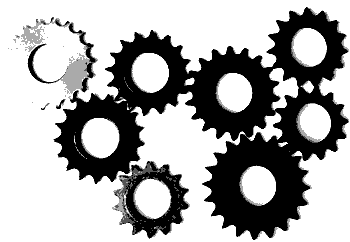[ 63XC.COM | HOW TO | GEAR CHOICE ]
Bob French on Gear Choice
63xc.com: How long have you been a cyclist? Bob: Seriously, racing and so on, since 1956. 63xc.com: And your father was a cyclist too? Bob: He started racing about 1925. 63xc.com: So what we've got here is a line of experience that runs through most of the last century. I'm particularly interested in talking to you because of the Brit tradition of time trialling, which was very much associated with fixed gear. Bob: Time trialling was a British invention. F. H. Bidlake came up with it as a way to keep racing on the road at a time when public opinion was turning very firmly against the massed-start races of the late 19th century. 63xc.com: For non-Brit Riders... a time trial is a timed race over a set distance, say 10 or 20 miles? Bob: It can be any distance. At the beginning, riders would actually ride in different directions. The idea is, you ride against the clock and against yourself. 63xc.com: And there's almost a tradition of riding these fixed? Bob: When trialling started in 1898, most serious riders were on fixed gear, because there was nothing much else around. 63xc.com: So, let's say that I'm a young buck in 1895 and I'm coming to you for advice. What gear would you put me on for light day rides and generally getting about? Bob: About a 60". The state of the roads and the state of the machine wouldn't allow you to push anything much higher than that. 63xc.com: So this is a solid-tyred machine? And the roads were more like what we'd call tracks today? Bob: Terrible roads in those days--sand, chalk, you name it. In fact, cyclists did a lot to get roadmenders to improve the roads... but that's another story. 63xc.com: What about when I decide to do some trialling? Bob: Well, remember, in the early years, any distance under 50 miles would be considered short. For flattish territory, Thames or East Anglia, you might go as high as 76". Certainly nothing much more than that, and a good deal less in hilly country. 63xc.com: Did those ratios creep up as bikes improved? Bob: Fashion is important in the bike industry. In the early years of the C20th, manufacturers started pushing much longer cranks, some of them as long as eight or nine inches. They made higher gears easier. Pure leverage. 63xc.com: This is the concept of development, which Sheldon Brown is very interested in. Bob: Long cranks made gears in the 70s easy--and event riders might go up as high as 100". Remember, there are big improvements in the roads around this time, and you've got pneumatic tyres to ride on. 63xc.com: Did the long cranks last? Bob: People went back to shorter lengths--typically 6 1/2" for track and 6 3/4" for the road. 63xc.com: So those are the lengths people were using all through the middle of the century? Bob: During the peak years, there was better understanding of how you get speed on a bicycle. The French call it souplesse--the speed at which you can turn the cranks. 63xc.com: OK, let's jump forward. Here I am in 1950 with my nice touring bike all set up for a day ride. What sort of gear should I be choosing? Bob: In winter, perhaps in the low 50s. It might go down as low as 48". 63xc.com: That's really low. Bob: The idea was to keep spinning and not get stiff. In summer, when cold wasn't an issue, you might get up as high as 63". This really goes back to a chap called Alf Whiteway, a great teacher, who advocated starting early and learning to spin for speed. Later, as you got stronger, the gears would get a bit bigger. 63xc.com: How big? Bob: Even in summer, on a trial, you might go up into the mid-70s. At my peak on a short event I would sometimes got up into the 80s, but that was when I was doing 10 milers in 22mins. I'd never dream of using such a gear today, even with characters like Sean Yates pushing 100"+... 63xc.com: Any thoughts about offroad? Bob: Well, I have to say that I laughed when I understood the name of your website... 63xc.com: I'd better point out that, when I started 63xc.com, I had only just started riding fixed. 63" sounded low to me. I know better now, of course. Early fixed cyclocrossers in the 40s and 50s--what would they have used? Bob: Well, you have to remember that money was tight in those days. They'd be grabbing any old upright, fitting HP rims and a fixed transmission because it was reliable... 63xc.com: Some of us still do that! Bob: ...the 40s or 50s seemed to be the way to go on those early events like the Chobham Clump. 63xc.com: A couple of 63xc.com contributors take fixes into SS and MTB races, and they seem to end up in the mid-50s. Bob: Fashions come and go, but the basics of riding a bicycle don't change that much. 63xc.com: Thanks, Bob. [ TOP ] |
Inteviewee
Bob French is a lifelong fixed gear fan, and also the librarian for the V-CC, the largest veteran cycle club in the UK.
Date
v1.0 written May 2004
Related
If you want to read more about the effect of crank length on performance, Sheldon Brown's 'gain ratio' page is a good place to start.
Mailing list
Join the 63xc.com list.
